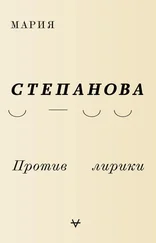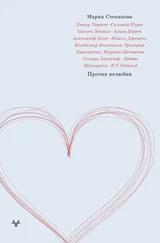From the first glimpse the imagined photographs of an imagined family (what it might have been, what it never did become) shock with their abundance. There’s a plethora of types of person, as if they were competing for places on the ark. It reminded me of the parade of professions in August Sander’s photographs, although in this case all the subjects are members of the same family — as if the Goldchains had been chosen to settle a new world and had to be prepared for all eventualities. There are peasants and city dwellers, two chefs, and the author appears to lose his mind over the family musicians: violinist, saxophonist, accordionist, drummer, another violinist, a tuba player. It’s like some Kafkaesque trade fair, where one and the same person sits at every stand, and peers out from every barrel. The wider the selection of professions, the more we peer straight to the depths and the differences vanish before our eyes. All that is left is typology: profession, age, costume, and the quality of the costume, the frame of the formulaic , which the author will stick his head into, for example “a middle-aged, stylish woman, suffering from chronic, mild depression — there is one in every family.”
There are family members about whom nothing is known except for the name, and the lifesaving operation demands the invention of clothes and an exterior appearance. Sometimes the self-portrait doesn’t work, Goldstein simply isn’t able to catch the likeness with a “real-life cut out.” But these also come in useful: names are made up for them, the family grows larger. A “Naftuli Goldszajn” appears in the world, whose nonexistence up to that point was only a matter of chance. As it says in the introduction “…we are faced with a black-and-white image of a man who might have lived in Poland sometime after the 1830s. He must be a Goldchain, since he looks like all the others.”
For Goldchain, the attempt to tell his son about his heritage becomes a journey into the Kingdom of the Dead: to become each of them, to stand in their places, to allow them to look out through him like a window. The author becomes a way out, the bottleneck of the family story, the only way and the only material for saying all that can be said. You can call the result of this anything you like, but you couldn’t call it a family history. The brevity of the descriptions, their feathery-perfunctory quality (well-dressed, distinguished-looking, in a hat, with a bird) become clearer with each photograph: in this thoughtful, subtle project a whole tribe and an entire world appears on a single face, and the result is strange and unsettling. The problem with memory (its unrecognizable, rainy darkness, lit with the sharp flashes of guesswork) is removed at once: the entire tribe, three or thirty generations back, is me, all me, me with a mustache, me in a bonnet, me in a cradle, me in the grave, indivisible, irrevocable. Once again the past gives way to the present.
The structure of the book tells us a great deal about the mechanism of authorial view: after the introductions, the portraits, the laconic notes on the characters/types, there are some diary jottings from years before the project was being prepared: everything that could be gathered together, including guesses, fantasies, a few real photographs. Among these, an old woman with a wonderful face, who would have been quite impossible to impersonate. The notes are handwritten and you have to make an effort to decipher them, becoming a textual critic in the process — this moment of resistance makes the material irresistible. Here Goldchain and I are as one: the bare threads of knowledge give us wings. The text includes some “ready-mades,” everyday objects, fragments of authentic letters and documents and although they don’t amount to much, by some authorial magic they are transformed and rendered compelling.
Such magic is rare, which is why I am picking through different approaches to the past, as one might pick through dried peas, in the search of one that might work. Anna Akhmatova once said that there is nothing more tedious than someone else’s dreams or someone else’s fornication — but other people’s family histories also leave unwanted traces of dust and whitewash on your hands. There are very few ways to flick the switch and turn the uninteresting into the enticing corridor of new experience, and people seldom succeed. Rafael Goldchain’s approach was to create for himself and his son the illusion of continuity; to add to his own family a chorus of imaginary figures who shared his own features and his gaze. This is the world of compensation where the lost is returned in triplicate, where Job’s children and flocks increase in number and the unexpected is canceled out.
The catastrophe is displaced, the hole is resealed, things find their places once again, everyone is alive, there are no omissions, no silences. It is, in its own way, Paradise before the Fall (there are far too many people now who think that Europe in 1929 or Russia in 1913 were such paradises). We long to have our pictures taken before such a backdrop: I was there. But “there” does not exist. The oath of fidelity to family history becomes its destruction, a parody of the resurrection of the dead: another is replaced by oneself, the known world is squeezed out by the invented world, hell is other people becomes the family album where everyone is in their rightful place, pretending to be alive. Ideally they would also talk — but in your voice, like an answering machine gone rogue.
*
In the Holocaust Memorial Museum in Washington there’s a whole type of exhibit that is displayed so it can’t be seen unless the visitor makes a conscious choice to view it: usually this constitutes video materials or photographic sequences, which are just terrifying — how might one describe such things more exactly? These images are even less reconcilable with life than the rest of the exhibits. The viewer is kept apart from them by a low barrier, so to see the actual images you have to stand up close. The intention here seems to be that viewers can then half-close their eyes and deliberately protect themselves — not from knowledge of what happened, because that is always there inside, descending lump-like from the throat to the stomach; not from the actual details , after all you don’t have to look at the layers of slowly rotting bodies, one on top of another, or the murderers being washed with hoses to cool them down, or a bulky old woman trying to hide a naked little girl behind her. No, you don’t need to get too close to those screens.
Sometimes it rather seems to me that the pictures need protecting from us: so that the nakedness of the dying and dead remains their business and illustrates nothing, invokes nothing, serves neither as a basis for conclusions nor identifications after the event. It isn’t about the fact that this turning of a life inside out, in as little time as it takes to show a film clip, to show its seams and fibrous lining, is a type of the deformed experience described by Varlam Shalamov: it has no meaning, no use, it cannot be applied, nor can it be unseen. All it can do is destroy you from the inside out. And this isn’t simply because all one’s systems of self-defense strive to neutralize the images into mere “pictures,” screens that are estranged from real life for the purpose of terrifying and titillating us.
The further the contemporary world wades into the past (up to the knees, the waist, the chest, by stages transformed to marble, like the character in Carlo Gozzi’s The Raven ) the louder the conversation about who owns it: the right to this or that scrap of the old world — and who has no such right to the past. Usually the inheritors and defenders are those who are closer by dint of knowledge or birth, scholars, family, associates. After them come all those who consider the dead to be their own property. It’s fascinating to watch when a stranger is drawn to this fenced-off property: someone from outside, someone who has not worked off their debt to this common ground. Events mostly unfold with the logic of a fight over an inheritance — and the first accusation flung at the outsider is his or her I . Someone like him or her has no business to be sniffing round such things, and so must be driven by self-interest, or worse, unfounded interest — overwrought, chance, without roots . Here the metaphors of agriculture and vegetable growth work best: blood-and-soil hums under our feet. So, even posthumously (which gives an especially morbid quality to the affair), the fair-haired Sylvia Plath was accused of the appropriation of images of Jews and ovens in the poems she wrote in the last months of her life. Accusations of exploitation hang in the air above the fields of memory, over the bent spines of her workers, her households, her underground streams, and the tips of her arrows.
Читать дальше











